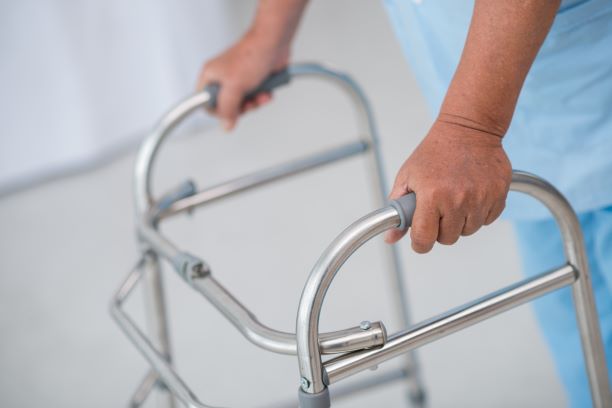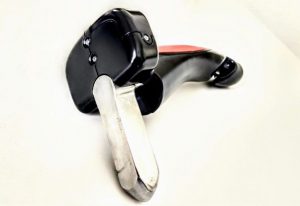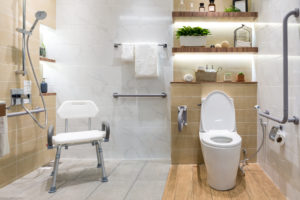Table of Contents
Which rolling walker is better? Should I invest in a 2-wheeled walker, or get the 4-wheeled walker with a seat. These are perhaps the most common questions that I get asked as a Physical Therapist working with the older adult population. The short answer is, it depends. It depends on a variety of factors that I will be discussing in this blog.

In this blog, I will be reviewing (2) of the most common types of light-weight walkers for the elderly, which are the 2-wheeled walker and the 4-wheeled walker with a seat. I will also be discussing the key features and implications for each walker, as well as providing links on where to purchase these walkers.
Hopefully, by the end of this blog, you will have a better understanding of the uses of each walker, in order to better drive your decision-making process.
Property of rehaballey.com
The following are helpful Links (Links provided are affiliate links through my recommended merchant’s websites)
2-Wheeled Rolling Walker (Link)
Junior 2-wheeled walker (Link)
2-wheeled walker with trigger-release mechanism (Link)
4-Wheeled Rolling Walker (Link)
Heavy-Duty (Bariatric) 2-wheeled walker (Link)
3-Wheeled Rolling Walker (Link)
Heavy-Duty (Bariatric) Rollator (Link)
2-WHEELED ROLLING WALKER (LINK)
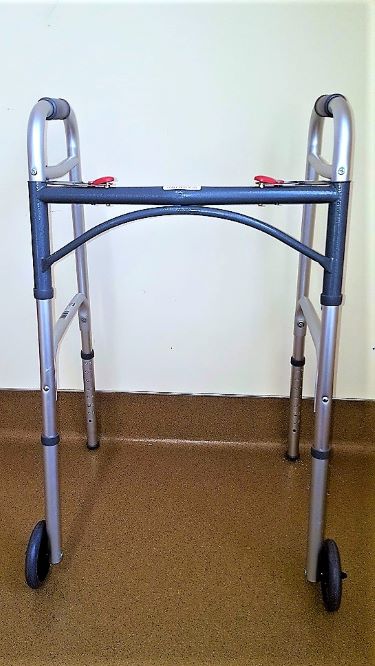
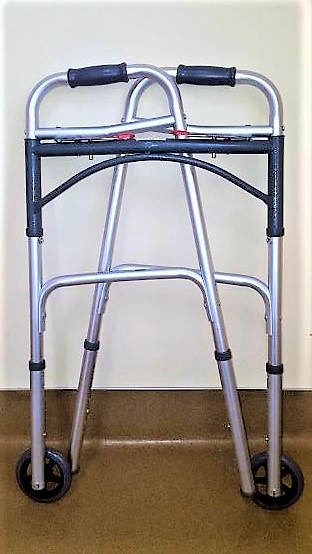
The first type of rolling walker is the standard 2-wheeled walker also known as a hybrid rolling walker. The standard 2-wheeled walker typically comes with vinyl handgrips, and a 2 push-button mechanism used to open and close the walker.
This type of walker is also equipped with 2-rubber wheels in the front and solid rear leg gliders in the back. This design allows for ease of rolling without having to lift the walker with each step; which supports normal and fluid walking patterns.
This type of walker is usually made of an aluminum frame which not only provides durability and stability, but also gives it a lightweight design for easy lifting and storage.
The wheels are typically made of hard rubber, and come in various size diameters including 3-inch, 5-inch, 7-inch, or pneumatic air-filled; the most common is the 5-inch diameter wheels.
The 5-inch diameter wheels are attached to a solid frame with push-pin height adjustments; which can easily be adjusted, repositioned, removed, and/or replaced with a different wheel diameter or type. The standard weight capacity for a standard rolling walker with 5-inch wheels is 250 lb.
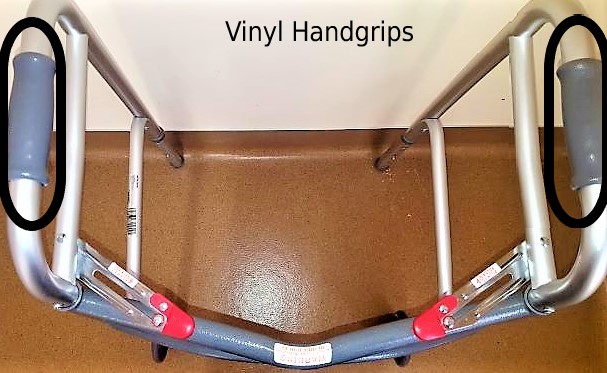
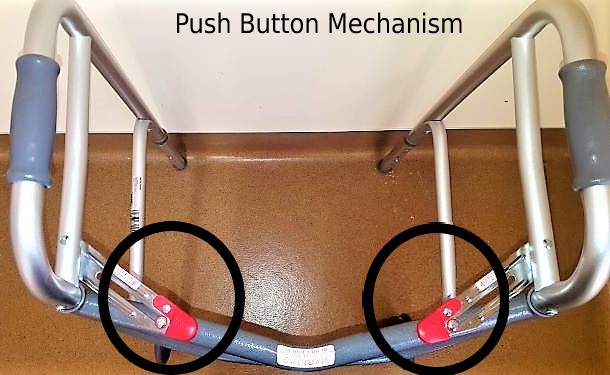

ALLEY TIPS: Sometimes you may see the wheels either facing on the outside of the walker or inside of the walker. Neither position is wrong. The most common reason for the wheels facing toward the inside of the walker is so that it can easily fit through tight or narrow spaces. The most preferred wheel size for tight spaces is the 5-inch wheel.
Property of rehaballey.com
There are many different types of 2-wheeled walkers suitable for different patients’ needs. I’ll briefly discuss the most common types in the next sections below.
JUNIOR 2-WHEELED ROLLING WALKER (LINK)
The Junior 2-wheeled walker has all of the features listed above in the standard rolling walker. It is best used for patients under 5 feet tall, and still has a weight capacity of 250 lb with the standard 5-inch wheels.
A variation of the junior 2-wheeled walker is the 2-wheeled walker made for taller people typically over 6 feet.
ALLEY TIPS: The standard 2-wheeled walker can be adjusted to varying heights, always research the min-max height adjustments before purchasing.
2-WHEELED WALKER WITH TRIGGER-RELEASE MECHANISM (LINK)
The 2-wheeled walker with trigger release mechanism is good for people who have difficulty using the 2 push-button mechanisms to open and close the walker, either due to pain, weakness, coordination, and/or dexterity issues. The trigger release also allows the user to manage the rolling walker without removing their hands from the walker.
HEAVY-DUTY (BARIATRIC) 2-WHEELED WALKER (LINK)
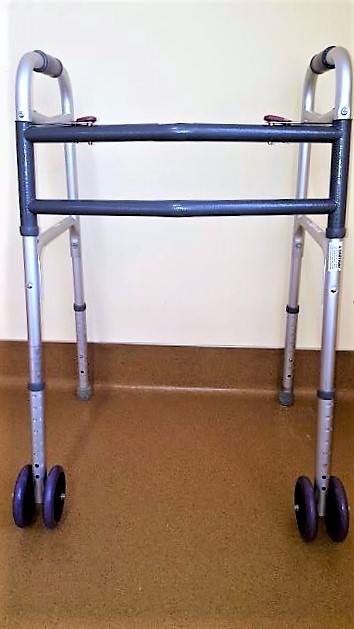
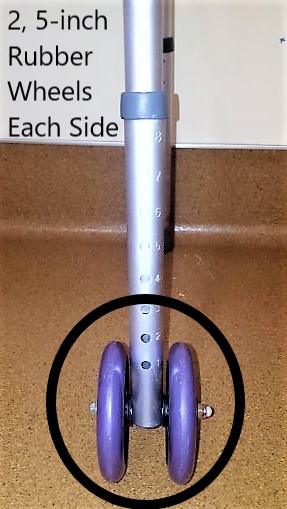
As the name implies, this walker is used for bariatric patients and typically has a weight capacity of 500 lb. This walker also provides more comfort as it has a wider frame. Another unique feature of this particular walker is that it has (2) 5-inch rubber wheels on each side, adding to its stability, and providing a higher weight capacity.
ALLEY TIPS: Due to its wider frame, you may have difficulty maneuvering through tighter spaces.
ALLEY TIPS: This walker is typically covered by insurance companies, but only if the user has a weight capacity of over 250 lb.
Property of rehaballey.com
WHAT IS THE 2-WHEELED WALKER GOOD FOR? NOT GOOD FOR?
Due to the durability and stability of the frame, as well as the size and structure of the wheels, the standard 2-wheeled rolling walker is good for people who walk short-medium distances, mostly indoors and sometimes outdoors on more even terrain.
This type of rolling walker can also be easily managed on curbs or single steps. Due to its sturdy frame and single-axis wheels, this rolling walker is particularly useful for the following people:
-Individuals with balance deficits
-Individuals who have a past history of falls
-Individuals who have had recent surgery
-Individuals with recent illnesses ie: stroke, TBI, etc.
-Individuals who are weight-bearing restricted (link to blog)
Due to the hard rubber wheels, the standard 2-wheeled rolling walker can be difficult to manage outdoors on rough surfaces or uneven terrain. The single-axis wheels can also make this rolling walker difficult to turn and manage in various directions.
This walker also does not have a locking mechanism however, with correct transfer techniques; this type of walker can still add more security for the user.
The standard 2-wheeled walker and its variations listed above are the most common preferred walker by therapists, particularly when working with older patients who have an acute injury or illness.
4-WHEELED ROLLING WALKER (LINK)
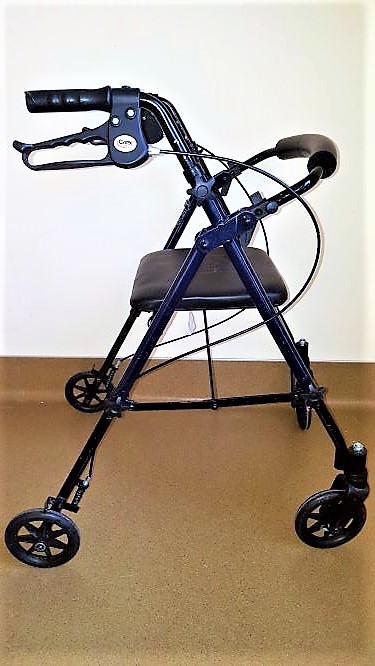
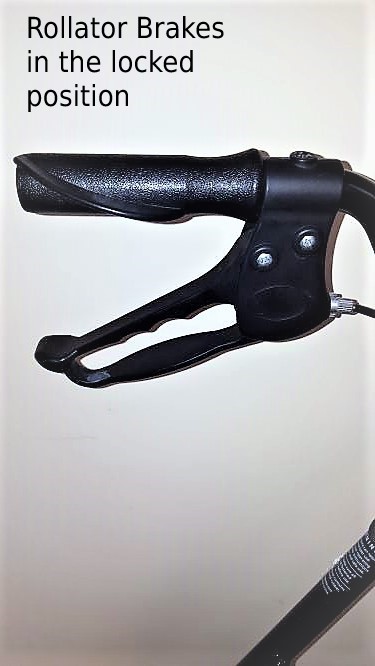
The 4-wheeled rolling walker, also known as a rollator comes with (4) multi-directional wheels for easier maneuvering. These walkers are convenient because they also come with a padded seat and backrest for comfort when resting.
Some rollators also have a basket that is usually positioned under the seat. This basket, which is highly recommended, can be used for easy transport and/or storage of personal, lightweight items while on the go.
The wheels of the rollator are typically between 6”-8” with the most common being the 6” wheels. Just like the 2-wheeled walker, the rollator can be purchased with pneumatic air-filled wheels for easier use outdoors on uneven or rough terrain.
Property of rehaballey.com
Another key feature of the rollator is the brakes that come attached to the adjustable handles. The brakes assure that the rollator is locked when transferring on and off the rollator, for added safety. The rollator handlebars are adjustable to fit the user’s height, and the rollator can also be folded flat for easier storage.
Like the 2-wheeled walker, most rollators are made with an aluminum frame and can hold up to 250 lbs. Rollators can typically run between 15 lb-20 lb but will depend on the type of rollator, the brand of rollator, and associated features.
ALLEY TIPS: Due to the variations of rollators, always check the max height and weight before making a final purchase.
As with the 2-wheeled walker, I’ll be discussing the (2) main variations of the rollator in the next section.
3-WHEELED ROLLATOR (LINK)
A variation of the 4-wheeled rollator is the 3-wheeled rollator. The primary purpose of the 3-wheeled rollator is to provide a more compact frame for ease of transferring through tight spaces. It also typically provides a more light-weight frame for easier lifting and handling.
The wheels are aligned in a triangular pattern which not only adds to the stability when used but also allows the rollator to maintain an upright position after folding.
The features of this type of rollator will include brakes and some type of storage basket or tray. The downside is due to the shape and compact size of the walker, it usually does not come with a seat.
HEAVY-DUTY (BARIATRIC) ROLLATOR (LINK)
The heavy-duty rollator, like the 2-wheeled walker, is designed for bariatric individuals and supports up to 500 lbs. These rollators have all of the features of a standard 4-wheeled walker, however, they are made with wider widths between the handles, as well as wider seats.
Some brands also have a wider backrest for more comfort. As with any other walker, always check the max height adjustments and weight capacity when comparing brands.
WHAT IS THE 4-WHEELED WALKER GOOD FOR? NOT GOOD FOR?
The 4-wheeled walker is good for individuals who are more active, on the go and ambulate more frequently in the community. Since this walker provides a seat, it is good for long-distance use; however, it can also be used in the home as well. Due to the multi-directional wheels, this walker glides easier on the floor and provides for easier and smoother turns.
Property of rehaballey.com
The locking mechanism provides more stability when sitting and standing. Some 4-wheeled walkers come built with a storage unit that does not have to be purchased separately and allows the added benefit of carrying personal items, which increases user independence and safety. The 4-wheeled walker is particularly useful for the following people:
-Community-ambulators
-Individuals with little balance deficits
-Individuals with low risk for falling
-Individuals with good safety awareness
-Individuals with little to no cognitive deficits
Since the 4-wheeled walker (rollator) has (4) multi-directional wheels, it tends to move a lot faster, which provides for less stability than the standard 2-wheeled walker.
Depending on the brand, the rollator tends to be heavier than the standard 2-wheeled walker, this may make it more difficult to transfer and store when compared to the 2-wheeled walker.
ALLEY TIPS: At times the brakes may not fully stop the rollator from moving. If you notice this, Rehab Alley recommends placing the rollator against a wall or stable object before sitting or standing. Always make sure the rollator is locked before transferring on and off.
WHERE IS THE BEST PLACE TO BUY WALKERS FOR SENIORS?
Most walkers listed in this blog can be purchased either from an equipment store such as Dougherty’s Pharmacy. However, any pharmacy near you should have a supply of durable medical equipment. You can also purchase durable medical equipment online for those who desire the convenience of online shopping.
For online purchases, I first recommend Health Products For You (HPFY) Stores, or Health Products for You rehab Store. Health Products For You not only has a wide range of medical/health products but they also have a great selection of rehabilitation products, which can be very hard to find.
As a Doctor of Physical Therapist, I absolutely love their rehabilitation selections. Health Products For You also has a rewards program that can be redeemed on future purchases, and you can even use your Flexible Spending Account (FSA) on eligible items. Click the banner (link) below for more details on the HPFY stores and seasonal sales.

Lastly, I would recommend Amazon.com. Although, in my opinion, their rehabilitation-related products are harder to find and obtain, they still have a wide selection of durable medical equipment. If you are an Amazon Prime member, then you can take advantage of the free 1-2 day shipping as well.
Throughout this blog, I have provided links for the walkers that I recommend. You can also find a quick reference to these links listed below.
Property of rehaballey.com
Hopefully, this blog outlines the 2-main types of rolling walkers and makes it easier for you to identify the best one for your needs. Always consult with your doctor and/or therapist regarding your specific case if there are additional questions or uncertainties. GOD BLESS YOUR ENDEAVORS!
The following are helpful Links (Links provided are affiliate links through my recommended merchant’s websites)
2-Wheeled Rolling Walker (Link)
Junior 2-wheeled walker (Link)
2-wheeled walker with trigger-release mechanism (Link)
4-Wheeled Rolling Walker (Link)
Heavy-Duty (Bariatric) 2-wheeled walker (Link)

